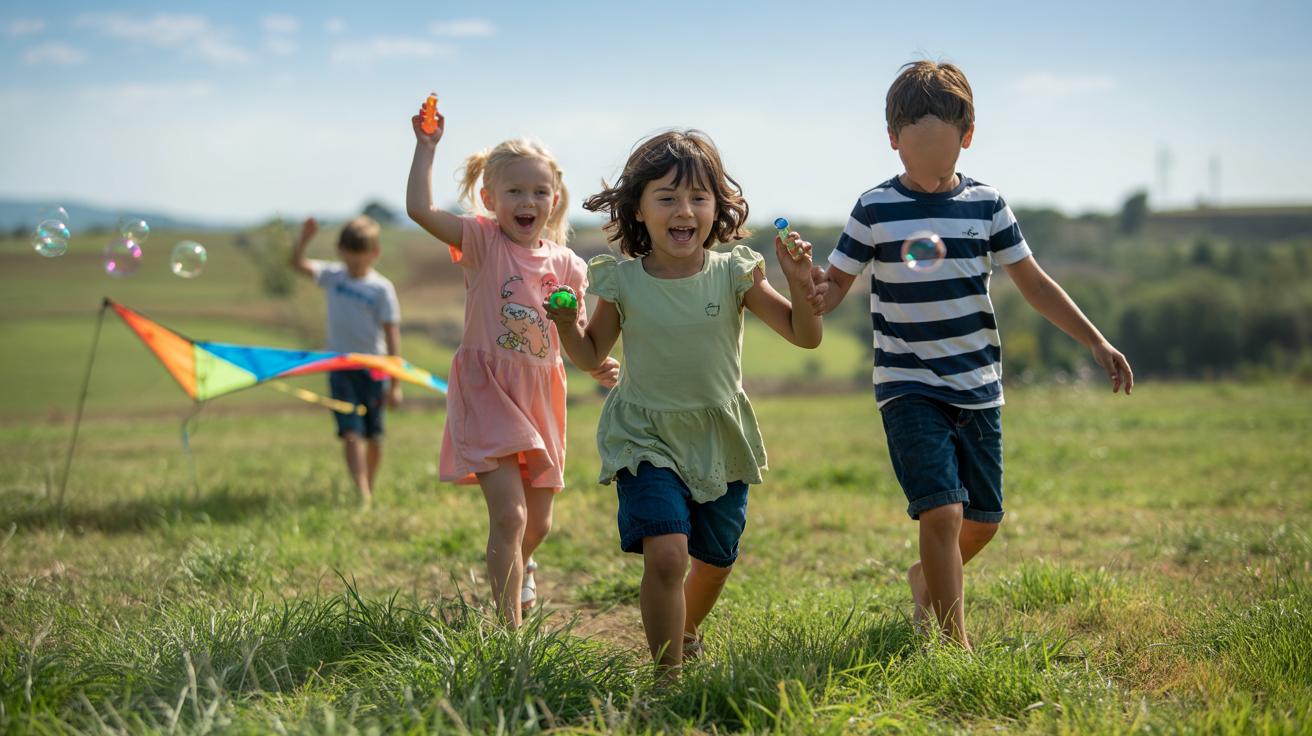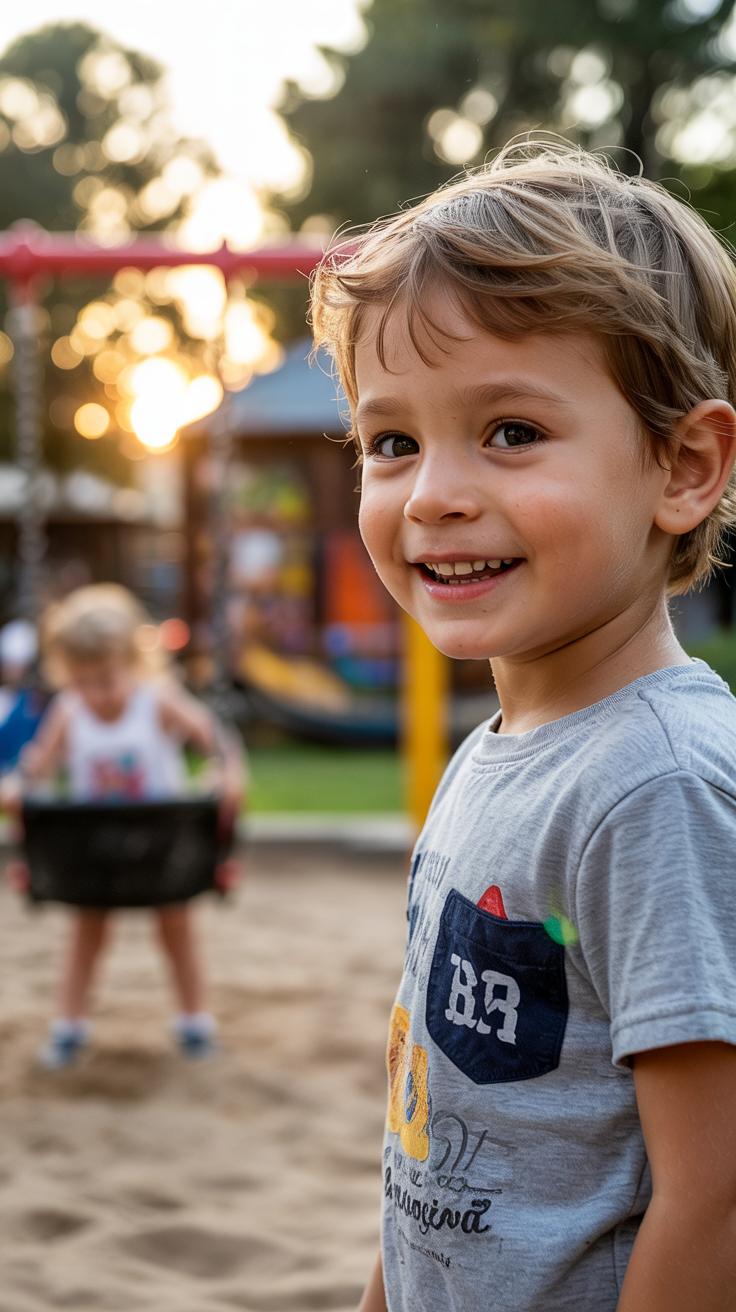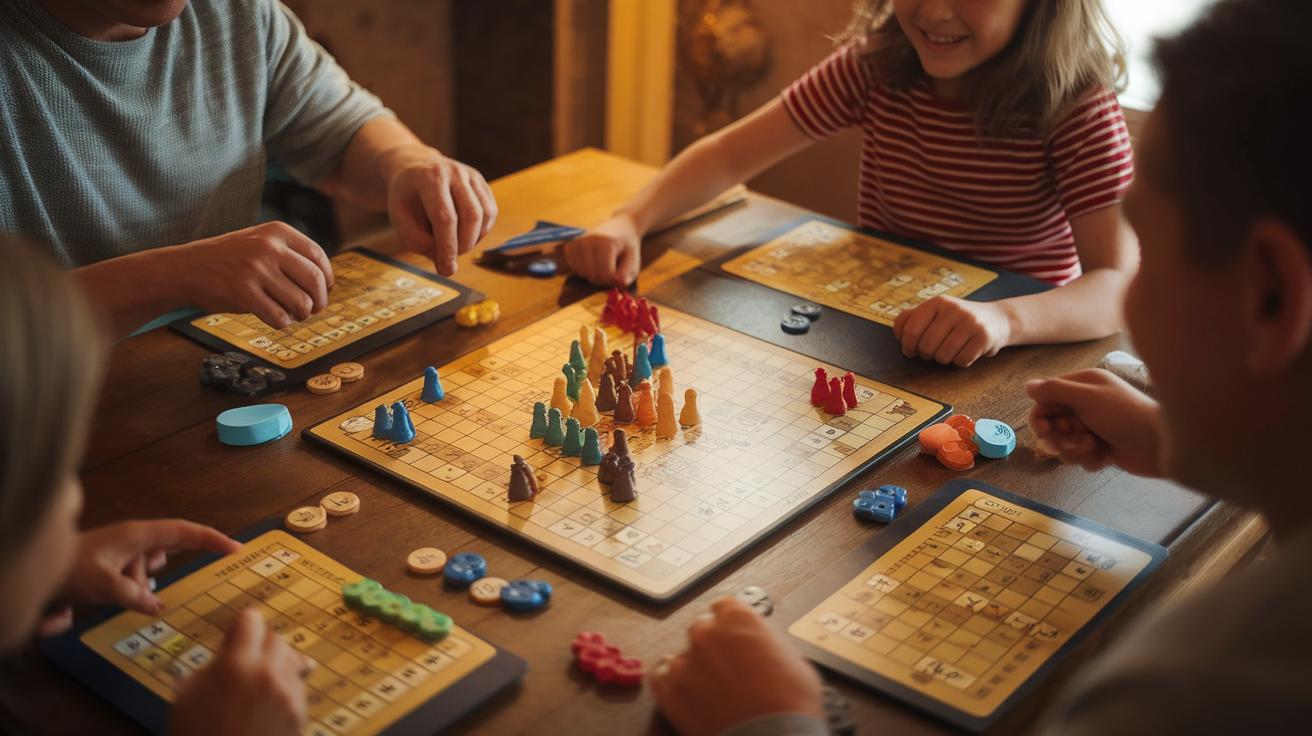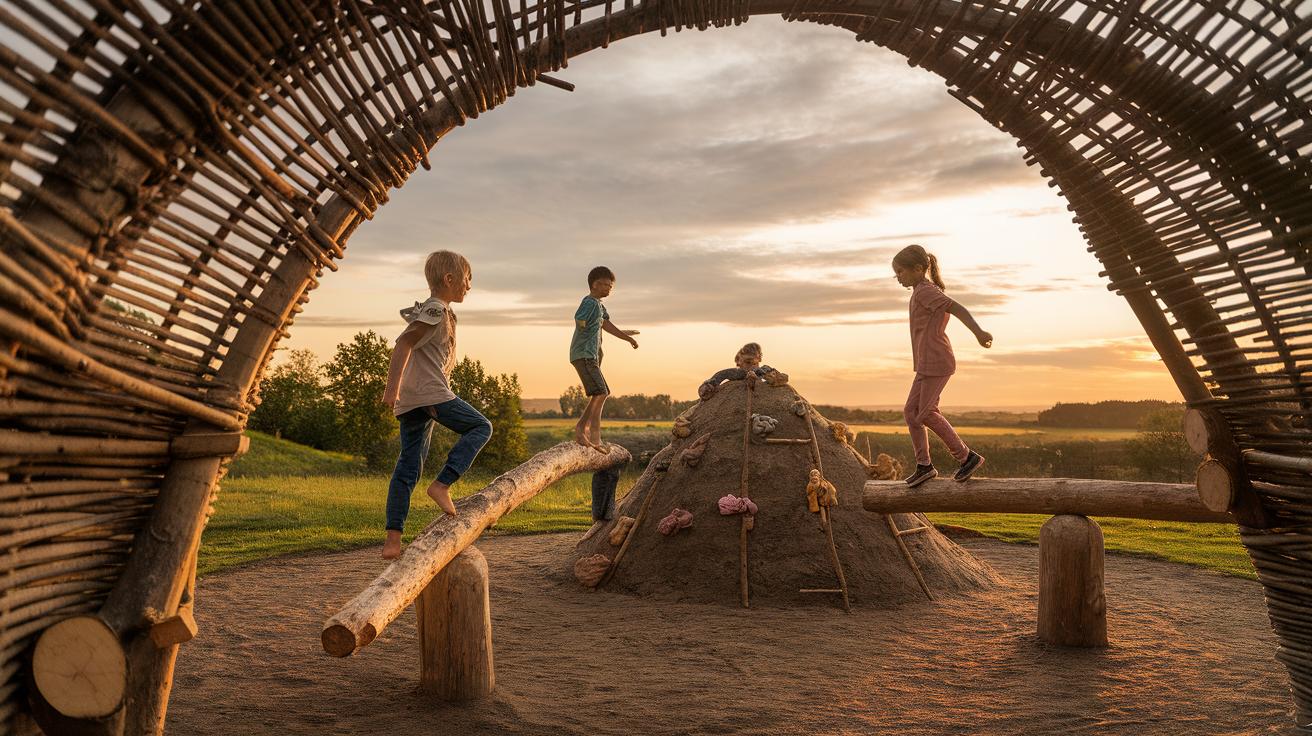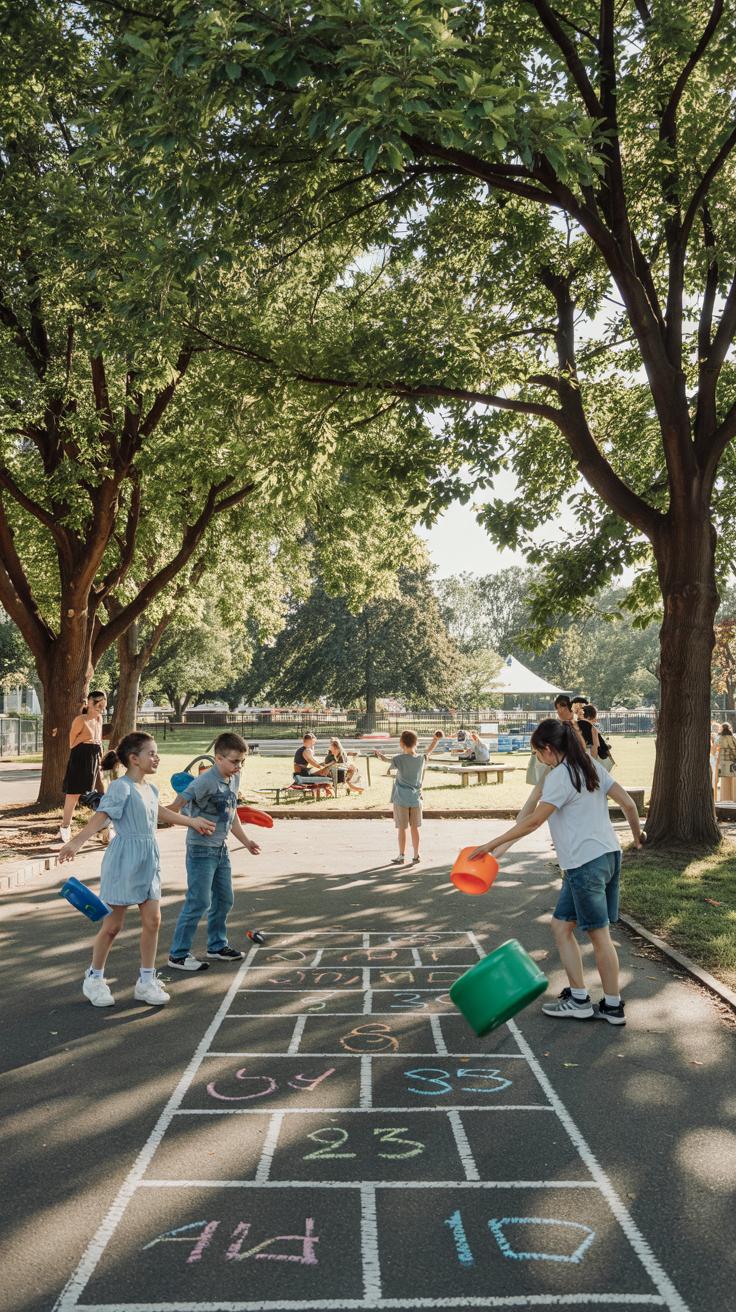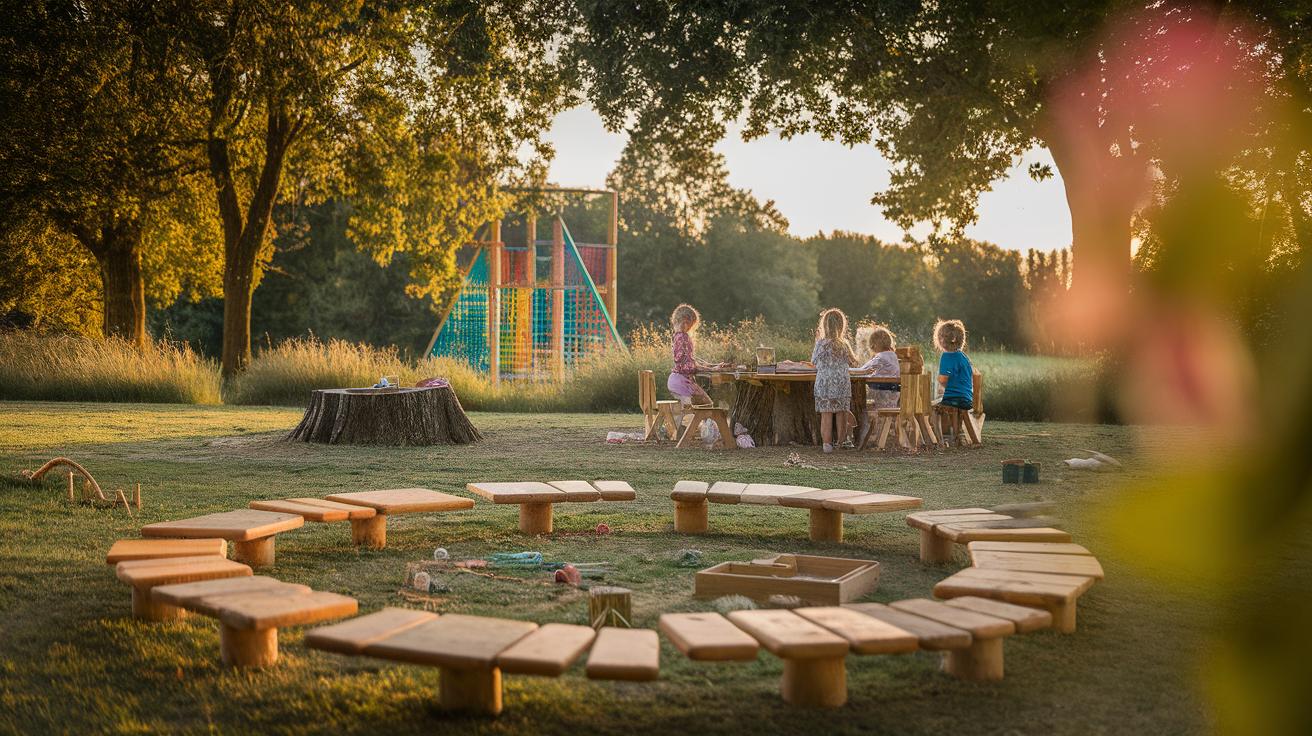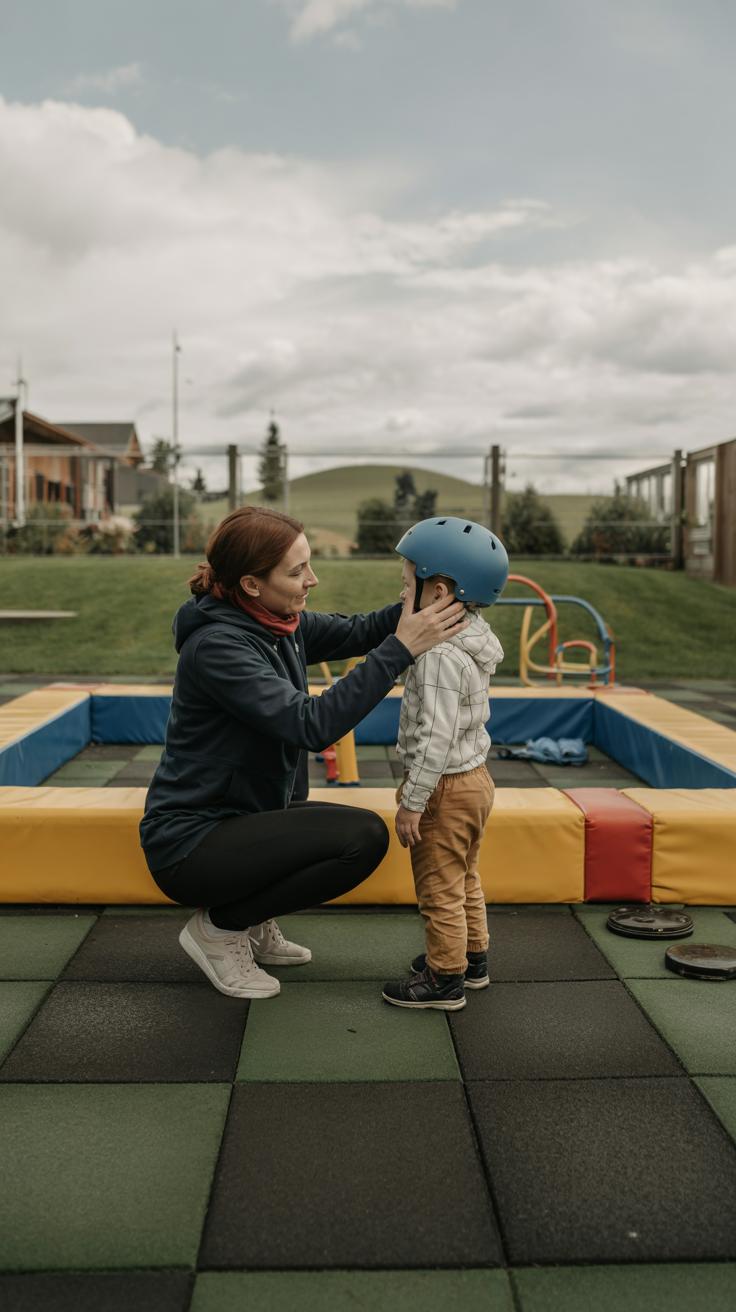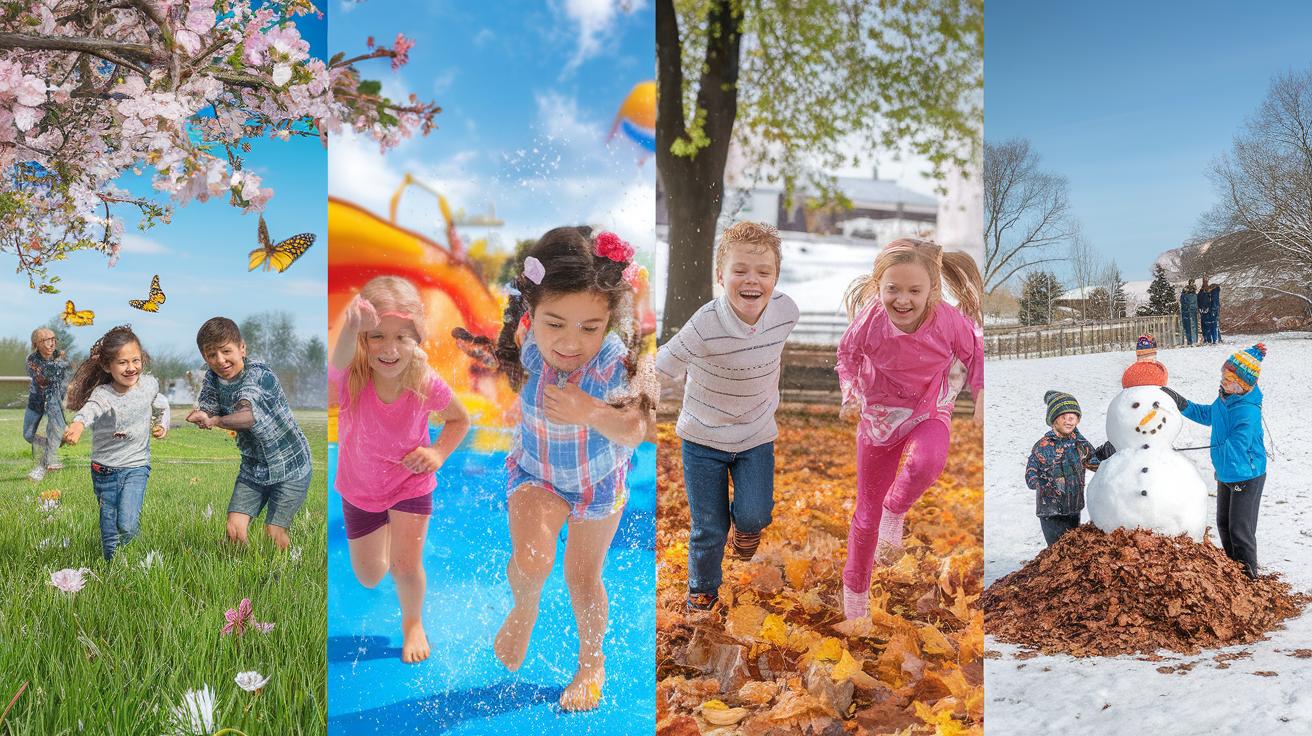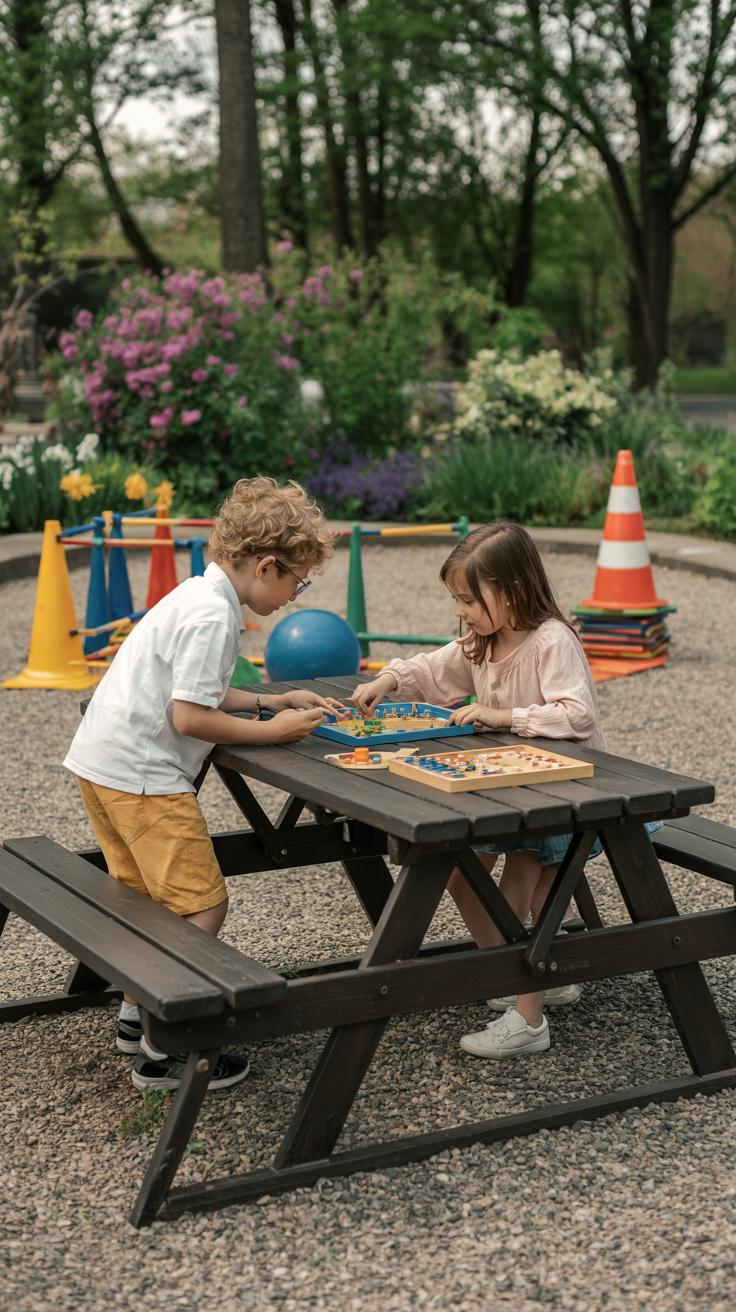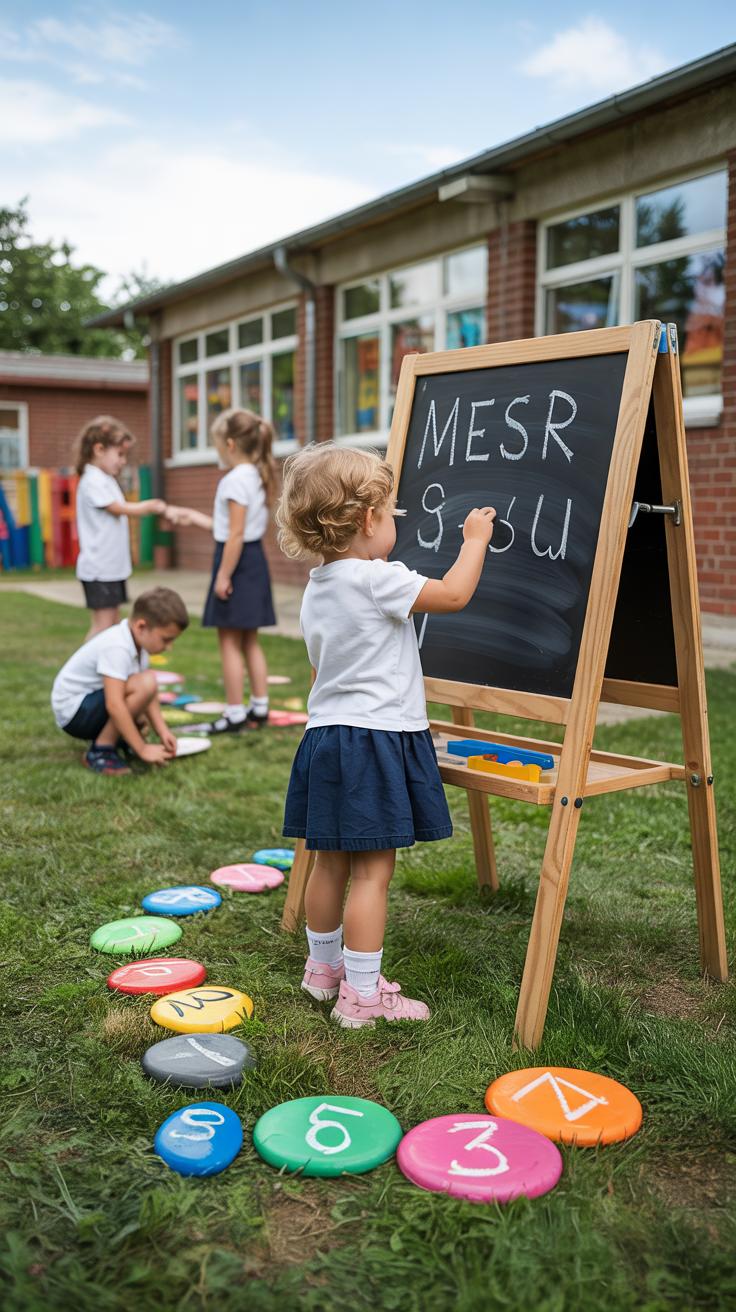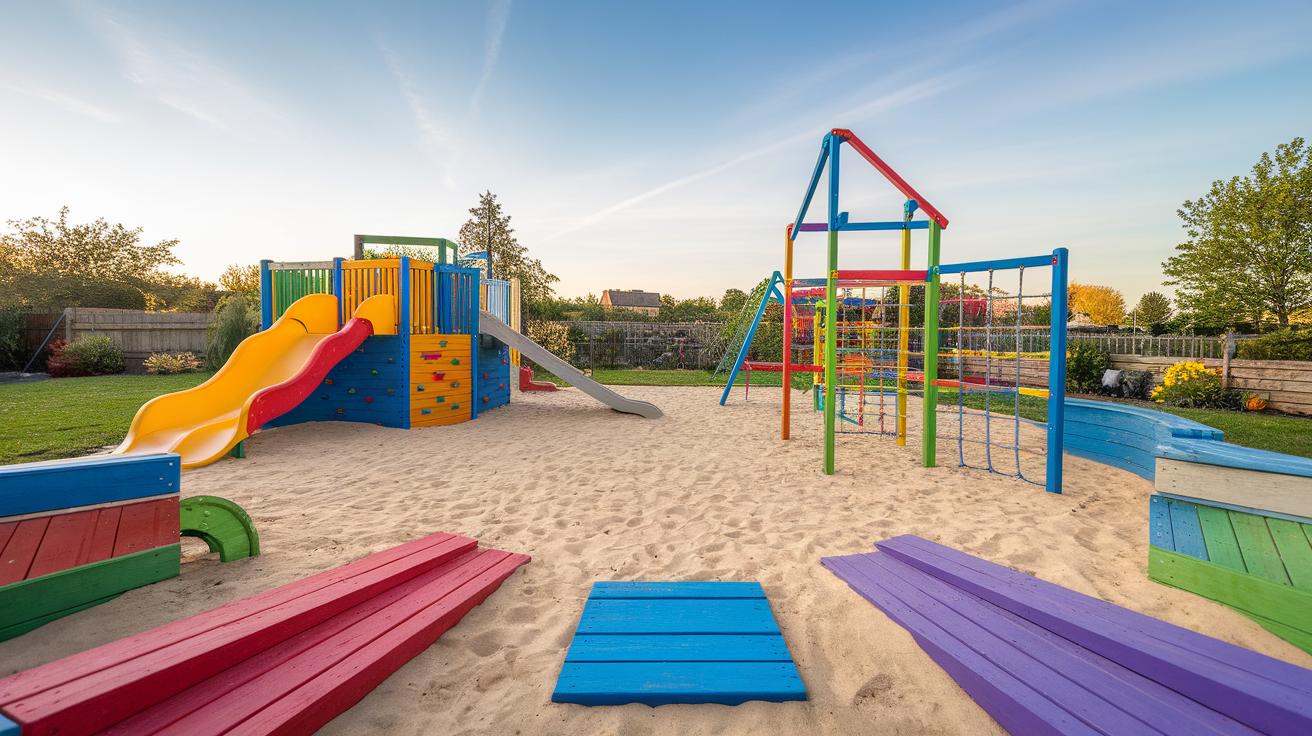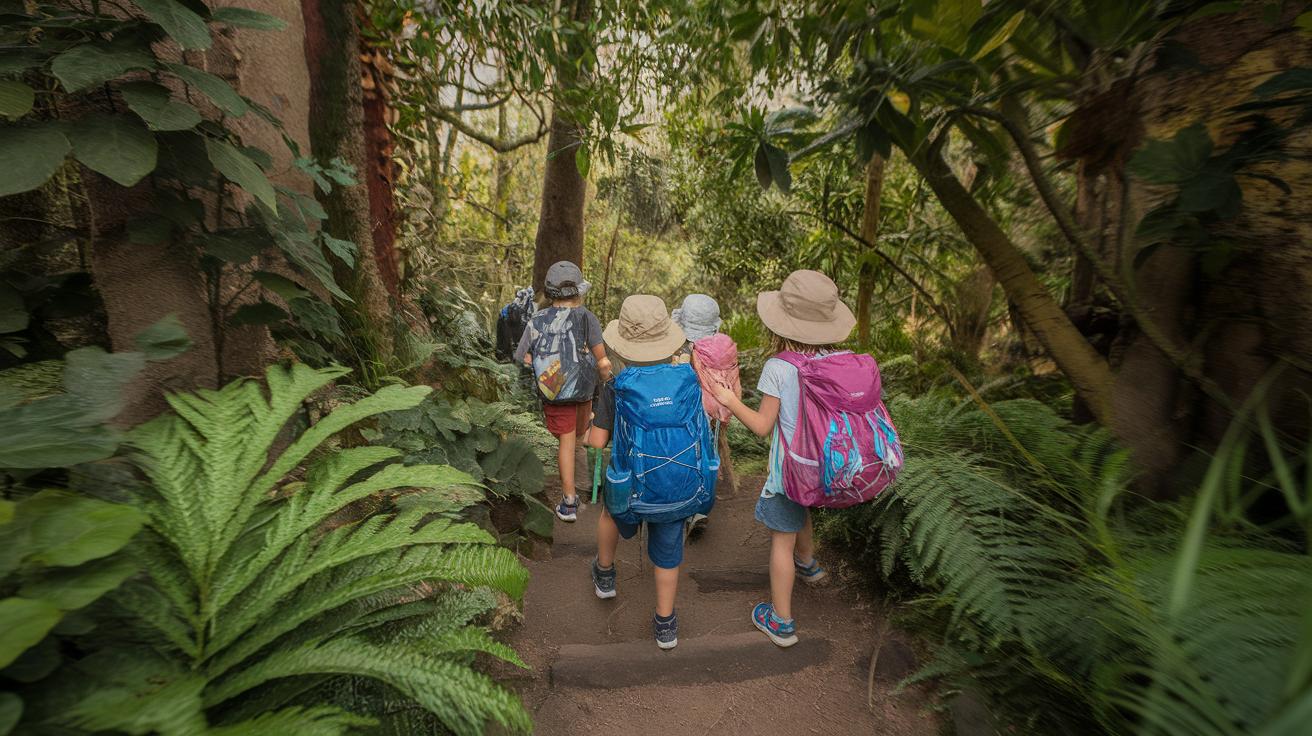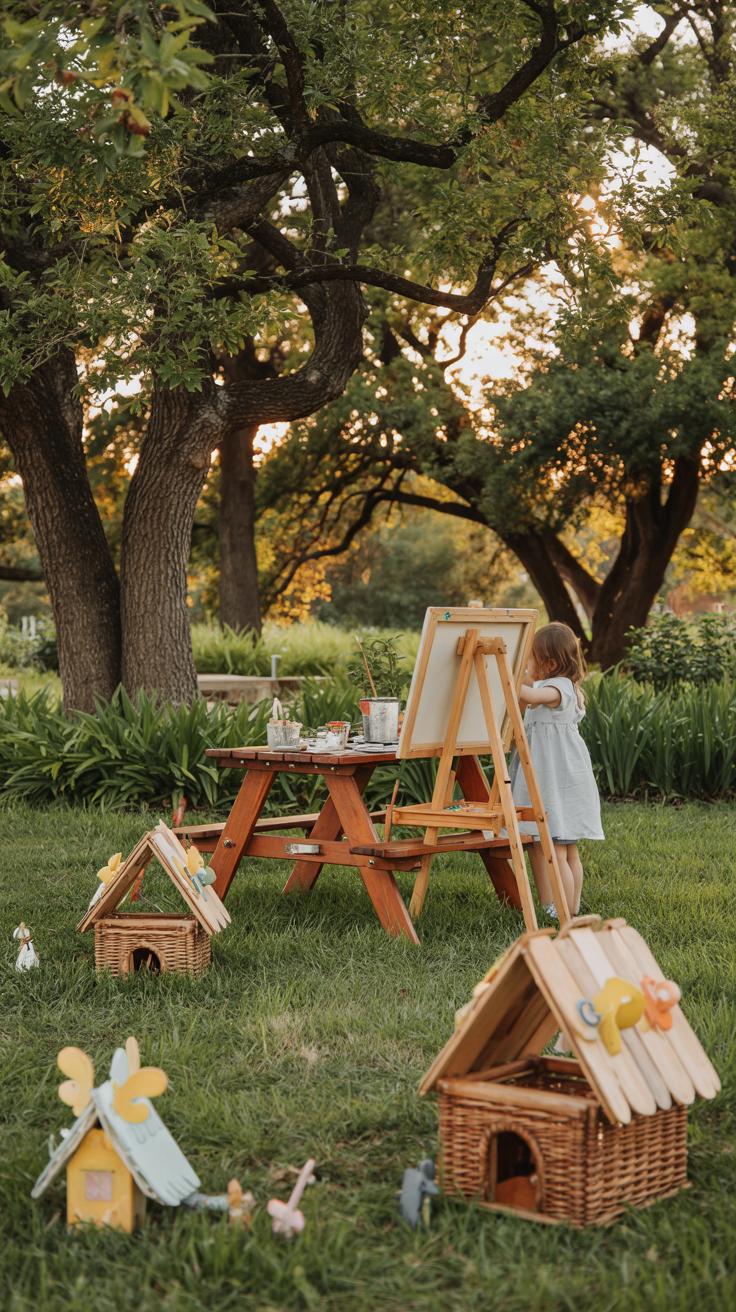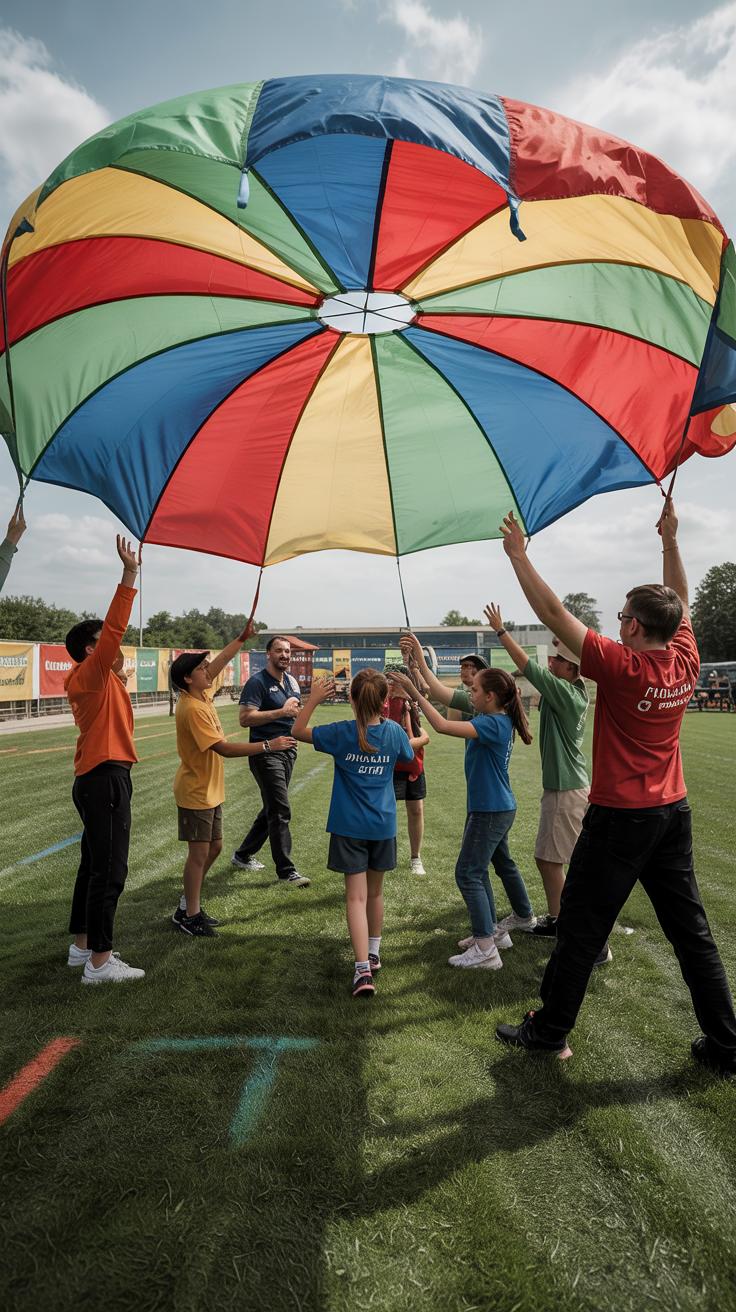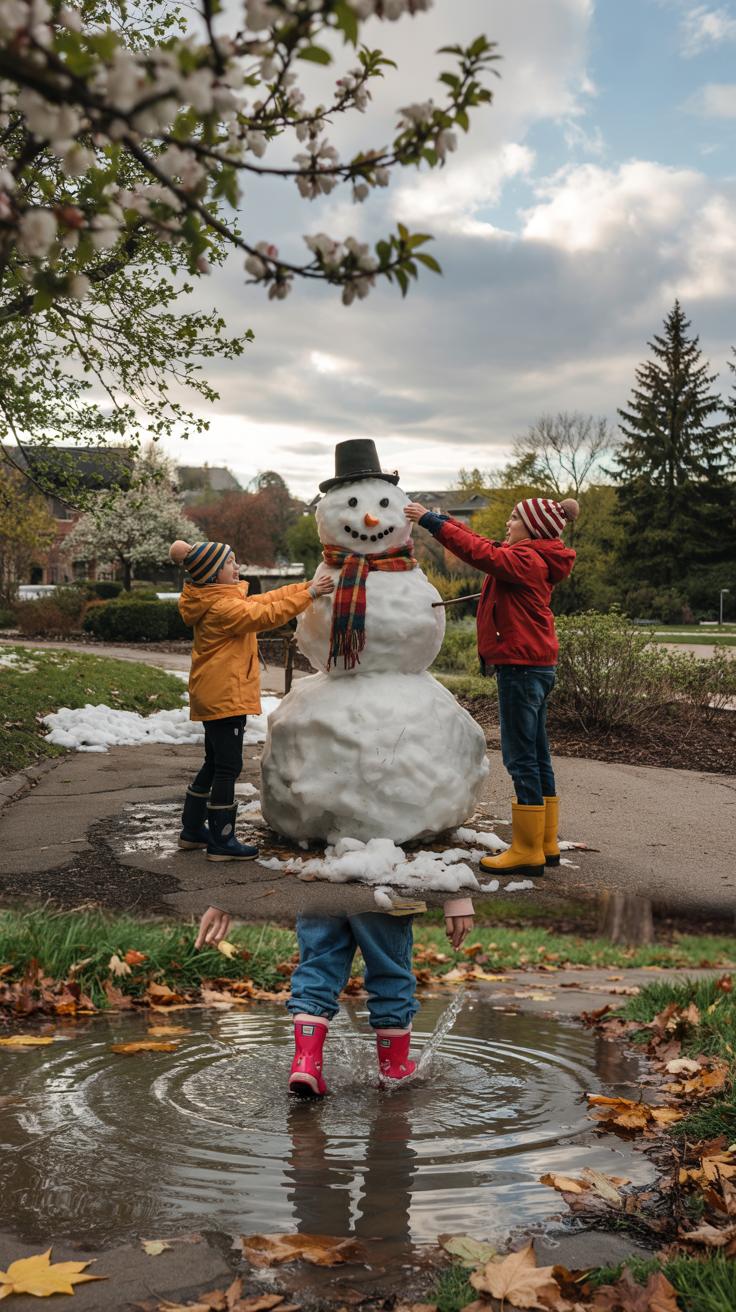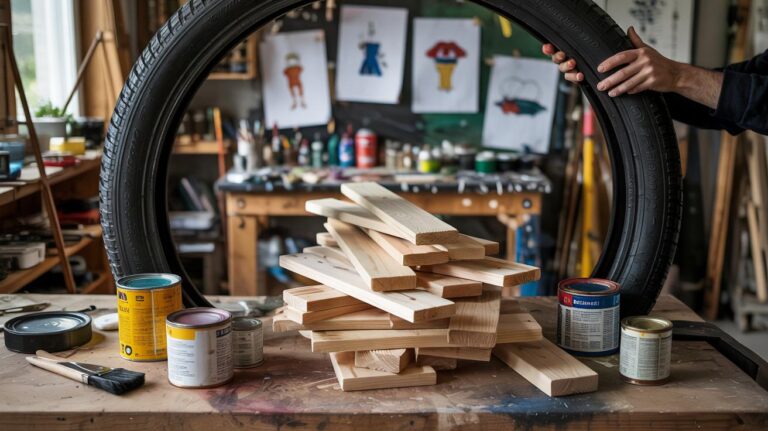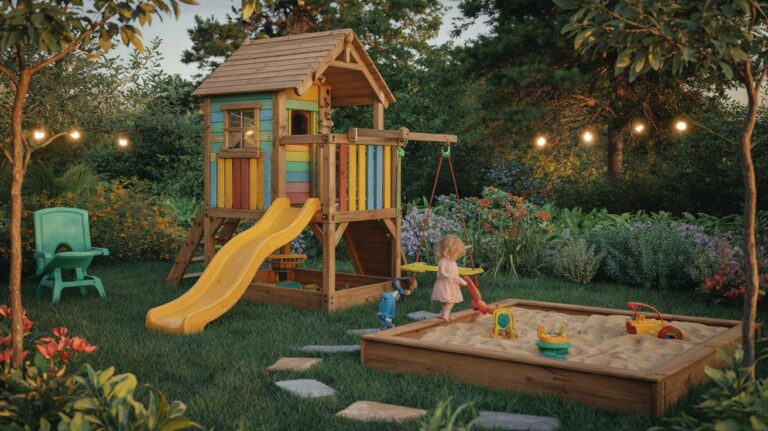Introduction
Playing outside offers valuable experiences that help children grow physically, mentally, and socially. Outdoor games invite kids to move, explore, and connect with nature and friends. These activities encourage physical fitness, improve mood, and sharpen problem-solving skills. You can see how simple outdoor games provide opportunities for learning and fun at the same time. Kids get to strengthen muscles, improve coordination, and develop social skills while enjoying fresh air and sunshine.
Choosing the right outside games is vital for keeping children engaged and safe. Options range from active sports to imaginative tasks such as scavenger hunts or simple tag games. They promote teamwork, patience, and creativity. Outside play also gives children breaks from screens and indoor routines. It prompts them to discover new interests and ways to entertain themselves. What outside games best fit your child’s age, interests, and space available? You will find practical ideas and benefits to support healthy play throughout the following sections.
Benefits of Playing Outside for Kids
You might wonder how spending time outdoors really helps children beyond fun. Playing outside supports kids’ physical health by encouraging movement, building strength, and improving coordination. Kids who play in the sun often develop better balance and endurance without even noticing they’re exercising.
Outdoor play impacts mental health too. It helps lower stress and lifts mood by exposing children to natural light and fresh air. Scientific studies show that kids who spend time outside tend to have reduced anxiety and better focus. Playing with others outdoors prompts social skills like sharing and teamwork, which are hard to develop through screen time alone.
Creativity also grows in outdoor play. Open spaces and nature inspire imagination as kids invent games, solve problems, and explore new ways to have fun. Their brains stay active in varied and unpredictable environments. Would you like to see your child benefit from all these advantages? Encouraging outdoor play is a simple step toward healthier, happier kids.
Physical Health Advantages
Outdoor games involve running, jumping, climbing, and other activities that develop muscle strength and coordination. Activities like tag or hopscotch challenge balance and quick reactions, making children more agile. These movements help build a strong heart and lungs, promoting overall fitness.
Playing outside also burns calories and prevents excess weight gain. Childhood obesity remains a concern, and physical activity combats this risk. When kids engage in outdoor games, they often play longer and with greater energy than indoor activities.
Exercise habits formed during childhood influence adult health. Encouraging outside play builds a foundation for lifelong fitness. What kind of games will get your child moving today?
Mental and Social Growth
Outdoor play reduces feelings of anxiety and improves mood through natural interaction and movement. Fresh air and sunlight regulate sleep patterns and release mood-boosting chemicals in the brain.
When kids play games like capture the flag or team relays, they learn the value of working together. Communication and problem-solving grow when children negotiate rules or plan strategies. These social skills help them succeed in school and life.
Playing with peers outdoors provides chances to make friends and build confidence. Watching your child develop social bonds while having fun outside is rewarding. What steps can you take to encourage these important connections in your child’s playtime?
Popular Outdoor Games Kids Love
Outdoor games offer a mix of fun and learning opportunities for children. Classic games like tag and hide and seek work well for different ages because they involve simple rules and encourage social interaction. Tag variations, such as freeze tag or tunnel tag, add excitement by changing how players are caught or freed.
Scavenger hunts bring children together with a shared goal to find objects from a list. You can tailor these hunts to the environment or specific themes, boosting creativity and observation skills. Treasure hunts add a storytelling element, where clues lead kids through a series of challenges.
Other games like jump rope or hopscotch mix physical activity with coordination. Offering a range of games keeps children interested while engaging their minds and bodies. What games have you seen children return to again and again?
Active Movement Games
Running, jumping, and chasing improve children’s endurance and motor skills. Tag is a perfect example because it requires quick reflexes, speed, and awareness. Relay races teach teamwork and pacing, challenging kids to push themselves while supporting each other.
Setting up obstacle courses can be simple but effective. Use cones, ropes, or natural objects for children to climb over, crawl under, or balance along. This kind of play strengthens muscles and coordination. Active games encourage kids to test their limits. How might you design a course that’s just right for your child’s abilities?
Mindful and Explorative Games
Games like scavenger hunts help children pay attention to their surroundings. Searching for specific leaves, rocks, or insects trains memory and observation skills. Nature bingo works similarly by encouraging kids to note details in the environment, turning everyday spaces into learning grounds.
Treasure hunts can promote problem-solving and creativity when players figure out clues or map directions. These games slow down play to involve thinking and discovery. Inviting children to make their own versions of these games adds a personal touch and deepens engagement. How might encouraging mindful play change your child’s outdoor experience?
Planning Safe Outdoor Play
Outdoor play offers children fresh air and exercise, but safety should always be a priority. Choose a space free from sharp objects, broken glass, or uneven surfaces that might cause injury. Keep an eye on weather conditions to avoid extreme heat or sudden storms during playtime. Hydration matters—encourage kids to drink water often, especially on warm days. Sunscreen application helps protect their skin from harmful UV rays, and reapplying every two hours keeps protection effective.
Consider what clothing your child wears. Light, breathable fabrics and hats shield them from the sun. Plan activities during cooler parts of the day, like early morning or late afternoon, to reduce sun exposure. Ask yourself if the play area allows clear supervision, making it easy to step in if a child needs help. Safety increases when you prepare ahead, ensuring play stays fun without unwanted risks.
Choosing Appropriate Locations
Pick outdoor spaces with plenty of open room, such as parks or backyards, where children can run and move safely. Avoid areas near busy streets or bodies of water unless constant adult supervision is possible. Check playground equipment for sturdy construction and smooth surfaces to prevent falls or scrapes. Grass or rubber mats under play structures cushion accidents better than concrete.
Look for locations that offer shade to keep kids cool. Familiar spaces make supervision easier and allow you to spot hazards quickly. Have you examined your chosen area recently for new risks like broken equipment or trash? Ensuring a safe environment means children can focus on enjoying their games without injury or worry.
Supervision and Safety Gear
Adults should actively watch children during outdoor play to step in when necessary. Supervisors can prevent accidents by guiding safe behavior and lending first aid if needed. Make sure kids wear suitable shoes that protect feet and provide grip—flip-flops and sandals often increase the chance of slipping.
Encouraging hats shields faces and necks from sunlight. Sunscreen with SPF 30 or higher protects exposed skin and should be applied before heading outside. If your child uses knee or elbow pads for activities like biking or skating, check that they fit snugly and are in good condition. How often do you remind children to take breaks and drink water? Close supervision and proper gear help children play safely and confidently under the sun.
Adapting Games for Different Ages and Abilities
Outdoor games should fit the children who play them. You can change games to suit different ages and physical skills so every child enjoys the activity. Think about the attention span and energy level of the kids involved. Younger kids often need simpler rules and shorter playtimes, while older kids can handle more challenge and teamwork.
For example, if you play tag with a group of mixed ages, younger children might have a “safe zone” to rest and catch their breath. Children with physical limits can participate by helping keep score or be “taggers” who move slower or tag gently. Adjusting running distances or changing game speed can make games more accessible.
Ask yourself: How can you include everyone without losing fun? Can you create roles or modify rules that allow each child to succeed and feel part of the game? Adapting games keeps playtime engaging and encourages all children to be active outside.
Games for Younger Children
Young kids focus better with simple, short games. Pick outdoor activities that don’t require many rules or too much running. Games like “Duck, Duck, Goose” or “Follow the Leader” work well because they are easy to understand and last just a few minutes.
Shorten game times so children don’t get overwhelmed or bored quickly. Use familiar locations and simple instructions. For example, turn “Simon Says” into a guessing game with clear actions for younger children to imitate. This keeps them moving without confusion.
You can also add breaks or quiet moments between rounds to match their developmental needs. How might changing rules or timing make outdoor games more fun and manageable for your little players? Adapting keeps them interested and physically active in the sun.
Games for Older Kids and Groups
Older children enjoy games that need planning and teamwork. Games like capture the flag or ultimate frisbee demand strategy and cooperation. These encourage kids to communicate, solve problems, and stay physically active longer.
Introduce rules that promote team roles, like defenders or attackers, which helps kids feel responsible for part of the game. You can increase physical challenges by adding more running, obstacles, or timed rounds.
Use larger play spaces for these games to give kids room to run and coordinate. How could you design rules that boost teamwork and strategic thinking in your group games? Engaging older kids in this way supports their physical fitness and social skills during sunny outdoor play.
Incorporating Learning Into Outdoor Play
Outdoor games offer more than just fun; they provide rich opportunities for learning practical skills and gaining knowledge. When children engage with games under the sun, their curiosity often leads to discovering how the world works. You can encourage this by picking games that involve problem-solving or observation.
Think about a game where kids collect different types of leaves. They not only enjoy running around but also recognize shapes and textures, building science skills. Questions like “Why do some leaves change color?” can spark deeper thinking. Math can enter the play when children count items or measure distances during activities.
Social studies emerge naturally when kids play games that involve roles or teamwork. They begin to understand roles, rules, and cooperation. Outdoor play lets children apply classroom lessons in real-world settings, making learning memorable and meaningful.
Nature-Based Learning
Games like scavenger hunts invite children to notice details in their environment. You can list items such as rocks, flowers, or insects for kids to find. This activity encourages detailed observation and boosts curiosity about living things and their habitats.
Plant identification games help kids learn names and features of local flora. When they touch leaves or smell flowers, they build a sensory connection with nature. These activities raise awareness about ecosystems and promote respect for the environment.
As children ask questions like “Why does this plant grow here?” they develop critical thinking skills related to biology and geography. You can help by providing simple guides or picture charts to make identification easier.
Skill Development Through Games
Many outdoor games naturally teach valuable skills. Counting actions during a relay race or scoring in a ball game strengthens math abilities. Following multi-step directions in a game like “Simon Says” sharpens listening and memory.
Team games foster collaboration and communication. Children learn to share ideas, take turns, and work towards common goals. These social skills are essential for school and life.
Free-form play also supports problem-solving as kids create rules or solve challenges together. Observing how children negotiate roles or settle conflicts during play gives you insights into their growing social skills.
What new skills could your child develop next time they’re outside? Try adding clear goals or simple challenges to familiar games and see how learning unfolds naturally in the sunlight.
Encouraging Creativity and Imagination Outdoors
Open-ended outdoor games give children space to use their imagination freely. Without strict rules, kids create their own stories and challenges. This process pushes them to think creatively and express themselves in new ways.
Children invent characters, develop plots, and engage in storytelling that changes with every play session. Nature offers endless inspiration through shapes, sounds, and textures. When kids build forts from sticks or craft art using leaves and stones, they solve problems and try new ideas.
How often do you see your child inventing a game or a scenario outside? Encouraging this type of play helps build creative thinking skills and allows children to enjoy the outdoors actively. Their minds stay sharp while their bodies stay healthy.
Role Playing and Storytelling
Kids create characters based on real or imagined creatures in outdoor spaces. They assign roles like explorers, heroes, or animals, making their play feel alive and exciting. Storytelling happens naturally as they act out events, developing their language skills.
Talking with friends during role play helps children practice social skills like listening, negotiating, and sharing ideas. Outdoor settings add a rich backdrop that sparks fresh ideas and makes stories more vivid.
What kind of characters might your child invent next? Observing or joining their stories can help you support their language development and social confidence.
Creative Art and Building
Using materials found outdoors, kids design art projects like leaf collages or rock patterns. They also build forts from branches or create obstacle courses with stones and sticks. These activities require planning and problem-solving.
Children test different designs, learn what works, and adjust their strategies. This process grows their innovation skills and persistence. Physical effort involved in gathering materials and constructing also strengthens coordination.
Could your child build a unique fort or design a nature trail today? Encouraging them to try will boost their confidence while making outdoor time more fun and meaningful.
Organizing Group Games and Social Activities
Group games offer more than just fun under the sun. They teach kids how to work with others and solve problems together. When you lead group games, set a positive tone by encouraging cooperation and respect from the start. Use clear and simple instructions so every child understands what to do.
Popular games like relay races and team tag naturally bring kids together. Explain each role and keep the teams balanced to avoid frustration. If conflicts appear, use them as teachable moments to show how talking and listening can fix disagreements.
You can ask children to help create or adjust rules, making everyone feel they belong. What happens when every player helps keep the game fair? The results usually include better teamwork and happiness among the group.
Team Games and Cooperation
Relay races challenge children to rely on teammates to succeed. Passing a baton or completing a task together teaches timing and trust. Team tag ramps up this idea by turning individual pursuit into collaborative defense. It encourages quick thinking and shared goals.
Cooperative challenges, like building an obstacle course or balancing on a rope together, ask players to communicate clearly and support one another. These activities help kids see how their actions affect the whole team. What feelings arise when success depends on everyone’s effort?
Managing Rules and Inclusion
Clear rules make games fair and fun. Before you start, explain what behavior is expected and what isn’t allowed. Involve children in setting or repeating the rules so they remember and respect them.
Make sure every player is included, regardless of their skill level. Adjust teams or tasks so no one feels left out or overwhelmed. Celebrate small wins and good sportsmanship to keep spirits high. When you create a respectful space, children learn to appreciate differences while playing.
Keeping Outside Play Fun Throughout Seasons
Making outdoor games enjoyable all year means adjusting to the weather and keeping your kids safe and interested.
In warmer months, choose games that help kids cool down, like water balloon fights or sprinkler tag. Sports such as soccer or frisbee work well in the early evening when the sun is less intense. These activities keep energy high without risking heat exhaustion. You can invite neighbors or friends to join, making the experience more social and fun.
When temperatures drop, keep kids moving to stay warm. Nature scavenger hunts encourage exploration and learning, even in fall or winter. Snowball tosses or building snow forts offer playful exercise and teamwork opportunities during snowy days. On chillier but dry days, simple games like jumping rope or relay races help maintain fitness without needing extra gear.
Think about what excites your children. Are they drawn to fast action or slower, thoughtful play? Adjust games and schedule playtimes accordingly, and make sure protective clothing matches the weather. How do you keep outdoor play fresh and safe for your kids as seasons change?
Warm Weather Activities
Water games fit warm days perfectly. Sprinklers, water guns, or a slip-and-slide provide quick cooling and lots of laughs. Sports such as soccer, baseball, or dodgeball teach skills and encourage teamwork, especially when played in cooler parts of the day like early evening. Setting up small tournaments among friends adds excitement and keeps kids motivated.
Playing outside when the sun begins to set reduces heat risks and lets children enjoy longer playtime. Simple tag games or relay races in the softer sunlight keep activity levels high. Offering breaks with cold drinks and shaded spots prevents overheating.
Cool Weather and Winter Games
Cooler seasons offer unique ways to enjoy outside play. Organize nature scavenger hunts that inspire kids to spot leaves, rocks, or animal tracks. This keeps their minds engaged and bodies moving. Snow offers chances for snowball games, sledding, or building forts, which develop coordination and teamwork.
When snow isn’t available, brisk exercises like jumping jacks, hopscotch, or running relays maintain children’s energy and warmth. Layered clothing keeps kids comfortable while playing outdoors. How can you encourage your children to enjoy cooler weather without losing interest in outdoor games?
Conclusions
Outdoor games play a critical role in children’s development by providing chances to be physically active, interact with peers, and connect with nature. These games can be tailored to suit different ages and interests, making them inclusive and stimulating for all kids. Encouraging outside play daily helps foster healthy habits that benefit children now and in the future. When kids grasp the joy of these games, they build stronger bodies and minds.
You hold the key to making outdoor play inviting, safe, and fun. Experiment with various game types to discover what excites your child most. Pay attention to how these activities influence their mood, behavior, and skills. Through outdoor games, children gain more than entertainment—they gain tools for lifelong well-being and social success. How will you support your child’s active playtime today?

